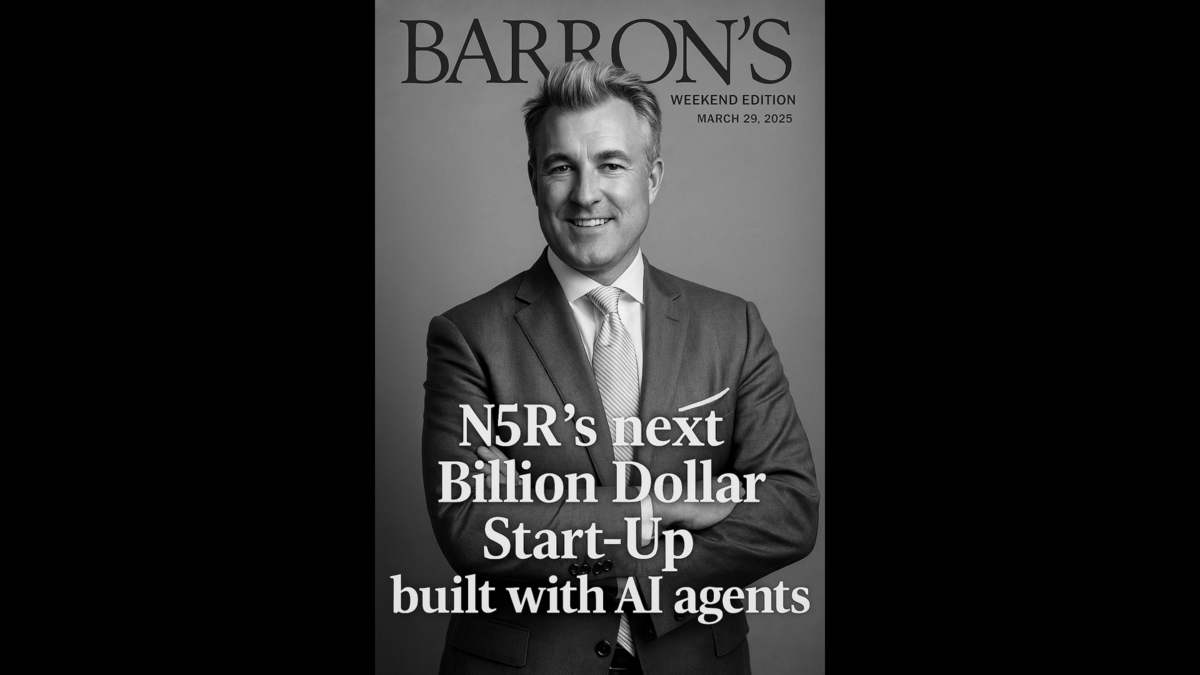As an entrepreneur who has built and sold multiple technology companies, I've had a front-row seat to the AI revolution. Based on my experience working with businesses across industries, I want to share my predictions for how AI will transform business over the next three years.
These aren't wild, sci-fi speculations. They're grounded in the technologies that exist today and the clear trajectories we can already observe. Think of this as your strategic roadmap for the near future.

1. The End of the Traditional Website
Prediction: By 2026, traditional static websites will be obsolete for businesses, replaced by AI-powered, dynamically personalized experiences.
What's happening now: AI can already analyze visitor behavior in real-time and dynamically adjust content, offers, and user experiences. Early adopters are seeing conversion rate improvements of 30-50%.
What's coming: Websites will become intelligent entities that have complete knowledge of your business and can engage visitors in natural conversations, answer questions, and guide them through personalized journeys. Every visitor will essentially get their own custom website.
Strategic implication: If you're planning a website redesign, skip the traditional approach entirely. Build an AI-first experience that can evolve and personalize itself for each visitor.
2. The Collapse of the Mid-Market Service Provider
Prediction: Within 24 months, we'll see a massive collapse of mid-market service providers across industries like marketing, legal, accounting, and consulting.
What's happening now: AI is enabling small firms to deliver enterprise-quality services at mid-market prices, while allowing enterprise firms to serve the mid-market through AI-augmented delivery models profitably.
What's coming: The middle will be squeezed from both directions. Small, AI-powered boutiques will offer comparable quality at lower prices with faster delivery, while large firms will use AI to move downmarket without sacrificing margins.
Strategic implication: If you're a mid-market service provider, you have three options:
1) Move upmarket by specializing in complex work that still requires significant human expertise,
2) Move downmarket by embracing AI to lower your costs and prices dramatically, or
3) Become an AI-first provider that can compete at any level.
3. The Rise of the AI-Native Business
Prediction: By 2026, the fastest-growing companies in most industries will be "AI-native" businesses built from the ground up around artificial intelligence.
What's happening now: We're seeing the first wave of AI-native startups that have fundamentally different operating models, cost structures, and scaling capabilities compared to traditional businesses.
What's coming: AI-native businesses will have structural advantages that make them nearly impossible for traditional businesses to compete with, including:
- 90% lower operating costs
- 10x faster product development cycles
- Exponential rather than linear scaling
- Ability to serve markets too small for traditional businesses
Strategic implication: The greatest opportunity today is building new AI-native businesses rather than trying to transform existing ones. For established businesses, creating autonomous AI-native divisions may be more effective than incremental transformation.
4. The Personalization of Everything
Prediction: Within 36 months, mass customization will become the norm across products and services, with AI enabling cost-effective personalization at scale.
What's happening now: AI is already enabling personalization in digital products, content, and marketing. Physical product personalization is beginning through AI-driven design and manufacturing.
What's coming: Consumers will expect everything to be personalized to their specific needs, preferences, and contexts. Businesses that offer one-size-fits-all products and services will be at a severe disadvantage.
Strategic implication: Start building the data infrastructure and AI capabilities to enable personalization across your entire customer experience. This isn't just about marketingâ€- it's about your core products and services.
5. The Emergence of AI Agents and Ecosystems
Prediction: By 2026, businesses and consumers will rely on ecosystems of specialized AI agents that work together to accomplish complex tasks.
What's happening now: We're seeing the first wave of specialized AI agents that can perform specific tasks autonomously, from scheduling meetings to managing investments.
What's coming: These agents will become more capable and will learn to collaborate, forming ecosystems that can handle complex workflows without human intervention. Businesses will deploy teams of AI agents just as they deploy teams of humans today.
What's coming: These agents will become more capable and will learn to collaborate, forming ecosystems that can handle complex workflows without human intervention. Businesses will deploy teams of AI agents just as they deploy teams of humans today.
Strategic implication: Start experimenting with AI agents for specific business functions. Identify processes that involve multiple steps and handoffs, as these are prime candidates for agent ecosystems.
6. The Transformation of Human Work
Prediction: Within 24 months, the nature of knowledge work will be fundamentally transformed, with humans focusing on guidance, judgment, and creativity while AI handles execution.
What's happening now: AI is already automating routine aspects of knowledge work across functions like marketing, legal, finance, and product development.
What's coming: The most valuable human skills will shift dramatically toward:
- Prompt engineering and AI guidance
- Judgment and decision-making
- Creative direction and ideation
- Emotional intelligence and relationship building
- Ethics and values alignment
Strategic implication: Start retraining your workforce now, focusing on the uniquely human skills that will remain valuable. Redesign jobs and workflows around human-AI collaboration rather than trying to preserve traditional roles.
7. The Acceleration of Innovation Cycles
Prediction: By 2026, product and service innovation cycles will compress from years to months or weeks, forcing businesses to adopt entirely new approaches to R&D and go-to-market.
What's happening now: AI is already dramatically accelerating product development in industries from pharmaceuticals to software to consumer goods.
What's coming: The time from idea to market will continue to compress, making traditional stage-gate development processes obsolete. Continuous innovation and deployment will become the norm across industries, not just in software.
Strategic implication: Redesign your innovation processes for speed, with AI-powered rapid prototyping, testing, and iteration. The goal should be reducing time-to-market by 10x, not incremental improvements.
8. The Democratization of Expertise
Prediction: Within 36 months, AI will democratize access to expertise across fields, enabling individuals and small businesses to perform tasks that once required expensive specialists.
What's happening now: AI tools are already allowing non-experts to create professional-quality content, design, code, and analysis.
What's coming: This trend will accelerate and expand to more domains, including law, medicine, engineering, and finance. The value of general expertise will decline sharply, while the value of specialized expertise combined with AI literacy will increase.
Strategic implication: If your business model relies on charging for relatively routine expertise, you need to evolve quickly toward either hyper-specialization or AI-augmented services at much lower price points.
9. The Emergence of AI-Generated Physical Products
Prediction: By 2026, AI will be designing and iterating physical products, with humans providing only high-level guidance and final approval.
What's happening now: AI is already being used for generative design in industries like automotive, aerospace, and consumer products, creating designs that outperform human-created alternatives.
What's coming: AI will take over more of the product design process, generating and testing thousands of iterations to optimize for performance, cost, manufacturability, and customer preferences.
Strategic implication: Begin experimenting with AI-driven design now, particularly for products with clear performance metrics. The competitive advantage in terms of product performance and development speed will be substantial.
10. The Rise of Autonomous Businesses
Prediction: Within 36 months, we'll see the first truly autonomous businessesâ€- entities that operate continuously with minimal human intervention.
What's happening now: We're seeing early examples of semi-autonomous business operations in areas like algorithmic trading, content farms, and dropshipping.
What's coming: Fully autonomous businesses that can:
- Identify market opportunities
- Create and optimize products or services
- Handle marketing and customer acquisition
- Manage customer relationships
- Adapt to changing market conditions
- All with minimal human oversight
Strategic implication: Start by automating complete business processes end-to-end, rather than individual tasks. Look for opportunities to create autonomous business units that can serve as testing grounds for more comprehensive autonomy.

Preparing for the AI-Transformed Future
These predictions may seem aggressive, but if anything, they're conservative. The pace of AI advancement continues to accelerate, and the business impacts are following close behind.
Here's how to prepare your business for this rapidly approaching future:
1. Develop an AI-First Mindset
Stop thinking of AI as a tool and start thinking of it as the foundation of your business. Every strategy, process, and decision should be evaluated through the lens of AI capabilities.
2. Build Your AI Infrastructure
Invest in the data, technology, and talent infrastructure needed to leverage AI effectively. This includes data collection and management, API integrations, and AI expertise.
3. Experiment Aggressively
The businesses that will thrive are those that are experimenting with AI applications today, learning what works, and scaling quickly. Set aside resources specifically for AI experimentation.
4. Redesign Your Operating Model
Don't just automate existing processesâ€- reimagine how your business could operate if you were building it from scratch today with AI at its core.
5. Develop an AI Talent Strategy
The competition for AI talent will only intensify. Develop a strategy for attracting, developing, and retaining the talent you'll need, whether that's technical AI experts or business people who understand how to apply AI.
In my next article, I'll provide a practical implementation guide for integrating AI into your business operations. Until then, I challenge you to identify the three predictions from this list that would have the biggest impact on your business and begin developing strategies to address them.
Roman Bodnarchuk is the founder of 10XAI News and creator of The 10X AI Accelerator program, helping entrepreneurs leverage artificial intelligence to achieve exponential growth in their businesses. Follow him on X @10XAINews and Instagram @10XANews.
